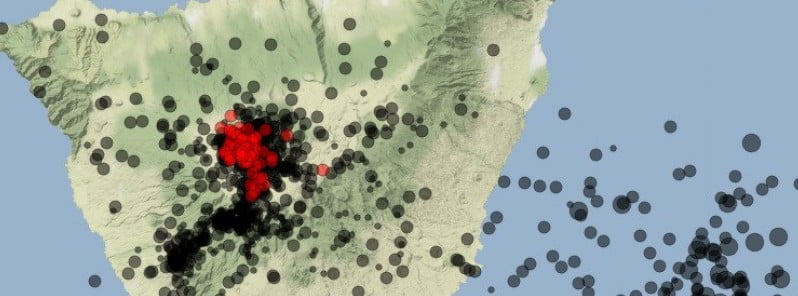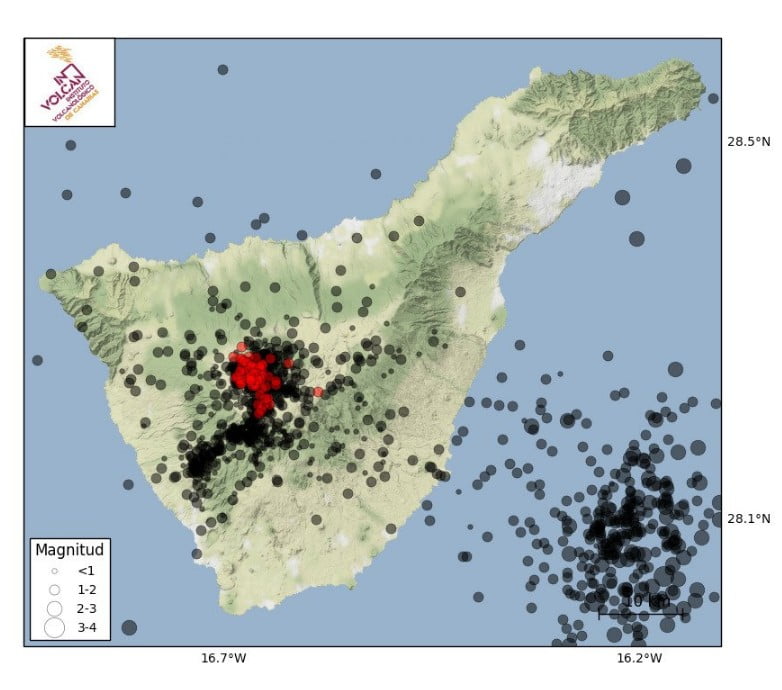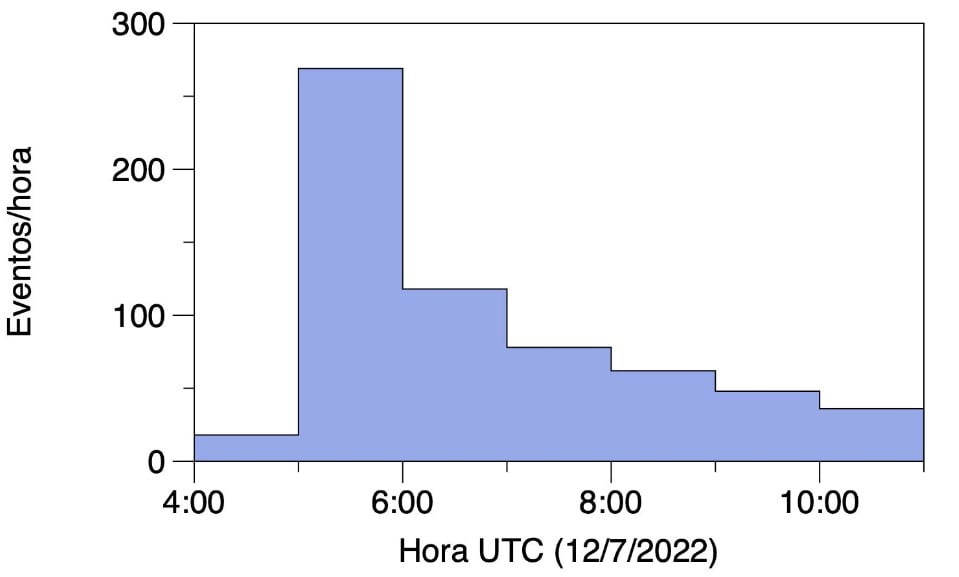Earthquake swarm under Teide volcano, Tenerife, Spain

A swarm of very low-magnitude hybrid seismic events was registered under Teide volcano, Tenerife, Canary Islands on July 12, 2022. The most likely origin of this type of swarm is the movement of fluids such as steam, gas or water, inside the hydrothermal system of the volcano.
The Canarian Seismic Network – operated by the Canary Islands Volcanological Institute (INVOLCAN) – has registered a swarm of very low-magnitude hybrid events under the Mount Teide starting at 04:50 UTC (05:50 LT) on July 12, 2022.1
Over the next three hours, the network registered at least 350 small earthquakes and more than 630 until 11:00 UTC when the swarm appeared to have stopped.


The characteristics were very similar to the swarms that were recorded in Tenerife on October 2, 2016, June 14, 2019, and June 10, 2022.
The most probable origin of this type of swarm is the movement of fluids such as steam, gas or water, inside the hydrothermal system of the Teide volcano, INVOLCAN said, adding that this swarm does not imply a higher probability of an eruption.
The last eruption on the island of Tenerife took place from November 18 – 27, 1909 (VEI 2).
Geological summary
The large triangular island of Tenerife is composed of a complex of overlapping Miocene-to-Quaternary stratovolcanoes that have remained active into historical time.
The NE-trending Cordillera Dorsal volcanic massif joins the Las Cañadas volcano on the SW side of Tenerife with older volcanoes, creating the largest volcanic complex of the Canary Islands.
Controversy surrounds the formation of the dramatic 10 x 17 km (6.2 x 10.5 miles) Las Cañadas caldera, which is partially filled by Teide stratovolcano, the highest peak in the Atlantic Ocean.
The origin of the caldera has been variably considered to be due to collapse following multiple major explosive eruptions or as a result of a massive landslide (in a manner similar to the earlier formation of the massive La Orotava and Guimar valleys), or a combination of the two processes.
The most recent stage of activity beginning in the late Pleistocene included the construction of the Pico Viejo and Teide edifices.
Tenerife was perhaps observed in eruption by Christopher Columbus, and several flank vents on the Canary Island’s most active volcano have been active during historical time.
This volcano is located within the Teide National Park, a UNESCO World Heritage property.2
References:
1 Mount Teide volcano activity update – INVOLCAN – July 12, 2022
2 Tenerife – Geological summary – GVP
Featured image credit: INVOLCAN

Commenting rules and guidelines
We value the thoughts and opinions of our readers and welcome healthy discussions on our website. In order to maintain a respectful and positive community, we ask that all commenters follow these rules.